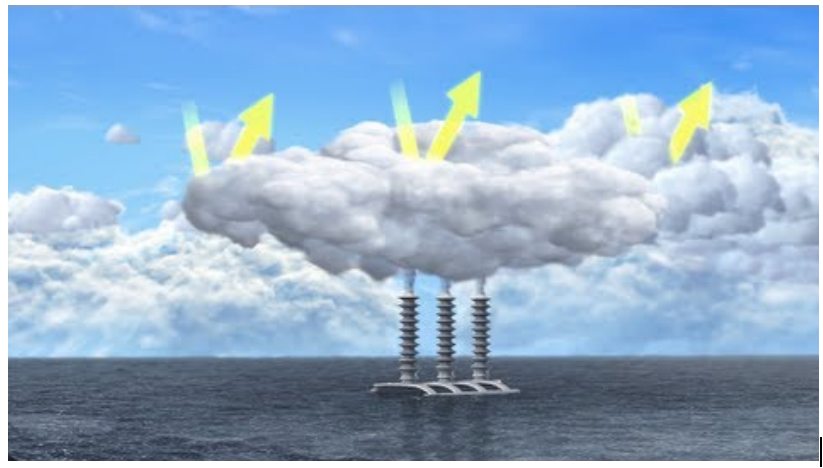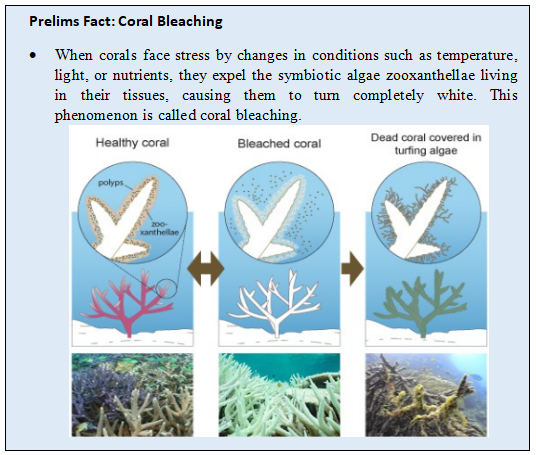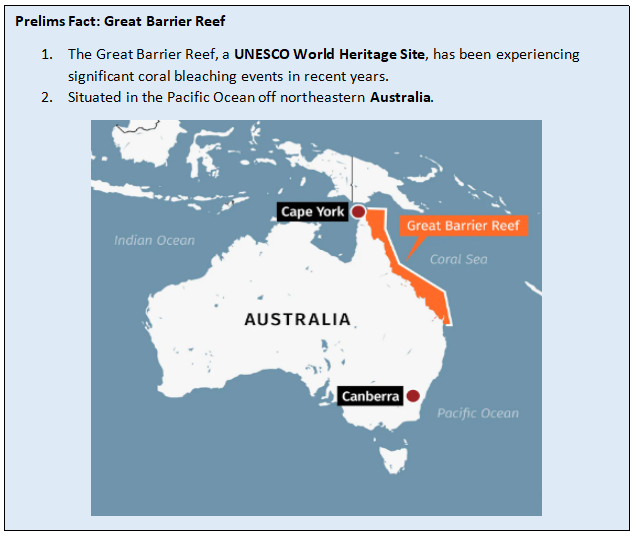- Courses
- GS Full Course 1 Year
- GS Full Course 2 Year
- GS Full Course 3 Year
- GS Full Course Till Selection
- Answer Alpha: Mains 2025 Mentorship
- MEP (Mains Enrichment Programme) Data, Facts
- Essay Target – 150+ Marks
- Online Program
- GS Recorded Course
- Polity
- Geography
- Economy
- Ancient, Medieval and Art & Culture AMAC
- Modern India, Post Independence & World History
- Environment
- Governance
- Science & Technology
- International Relations and Internal Security
- Disaster Management
- Ethics
- NCERT Current Affairs
- Indian Society and Social Issue
- NCERT- Science and Technology
- NCERT - Geography
- NCERT - Ancient History
- NCERT- World History
- NCERT Modern History
- CSAT
- 5 LAYERED ARJUNA Mentorship
- Public Administration Optional
- ABOUT US
- OUR TOPPERS
- TEST SERIES
- FREE STUDY MATERIAL
- VIDEOS
- CONTACT US
Marine Cloud Brightening
Marine Cloud Brightening
18-10-2023

Why in News?
Recently, Various Australian organizations have shown their interest in exploring whether Marine cloud brightening could reduce coral bleaching.
About Marine Cloud Brightening

- Definition: It refers to the process of spraying Seawater droplets into low-level clouds over the oceans, acting as condensation nuclei and increasing the reflectivity and persistence of the clouds.
- Origin: British cloud physicist John Latham introduced the concept of cloud brightening in 1990 as a method to control global warming by altering Earth's energy balance.
Process of Marine Cloud Brightening
- Cloud Formation: Clean maritime air primarily forms clouds from scarce sulfates and sea salt crystals, resulting in larger droplets with lower light reflection.
- Enhanced Reflectivity: Marine cloud brightening (MCB) enhances the reflectivity of marine clouds, thereby resulting in whiter and brighter clouds.
- Release of Sea water Droplets: The process involves the use of water cannons or specialized vessels to release fine sea water droplets into the atmosphere.
- Evaporation of Droplets: Droplets evaporate, leaving salt particles as cloud condensation nuclei, which contribute to the formation of denser, brighter clouds.
- Aerosols as cloud particulate: Warm clouds are formed by suspended water droplets around aerosols, which can be natural or human-made, such as dust, pollen, ash, and sulfates.
- A cloud with numerous small droplets is brighter than one with fewer large droplets, even if both clouds have the same amount of water.

Benefits of Marine Cloud Brightening
- Lower sea surface temperatures: MCB has the potential to decrease sea surface temperatures in specific regions, potentially reducing the frequency and severity of coral bleaching events.
- Resurrection of Great Barrier Reef Researchers are conducting modeling studies and small-scale experiments to evaluate the feasibility of MCB for the Great Barrier Reef’s revival.
- Neutralize impacts of Climate change: It has been suggested to mitigate the severe impacts of climate change, including reducing warming, frequency of heatwaves, and high-intensity storms.
- Rain cycles: MCB will help in recalibrating the rain cycles leading to better precipitation both on land as well as sea.

Issues related to Marine Cloud Brightening
- Unintended cloud Brightening: Unintentional cloud brightening is already in play as highlighted by The Intergovernmental Panel on Climate Change (IPCC).
- Ship exhaust contains sulphates, a potent aerosol source, which contributes to droplet formation, resulting in cloud trails called ship tracks.
- Technical Feasibility: MCB involves large-scale seawater spraying at high altitudes, presenting engineering challenges in design, cost, maintenance, and operation of spraying devices.
- Moral Hazard: The MCB could potentially lead to a lack of commitment from policymakers and the public to reduce greenhouse gas emissions and adapt to climate change.
- Environmental Impacts: MCB-induced changes in cloud patterns and precipitation could disrupt regional climate and hydrological cycles, potentially leading to unintended consequences like droughts or floods.
- Ethical Issues: It raises ethical concerns regarding human intervention in natural processes and the governance and decision-making processes surrounding its implementation.
Way Forward
- Countries can concentrate on advanced technologies that have advanced beyond the ideation stage and are now in the experimentation stage like Stratospheric aerosols injection (SAI).
- More research is needed to understand geoengineering's impact on regional ecosystems, and international cooperation among educational and research institutes is necessary.
- Public funding is needed for specific technologies that can reduce emissions, primarily through the redirection of fossil fuel subsidies.
- Governments should be the sole source of funding for outdoor experimentation.
Conclusion
MCB is in its early stages of research and development, necessitating further studies to evaluate its feasibility, efficacy, impacts, risks, and governance. MCB is not a standalone solution but a potential complementary measure to help coral reefs manage short-term extreme heat stress. The integration of MCB into a comprehensive approach that includes conservation, restoration, adaptation, and innovation is crucial for protecting coral reefs from climate change's effects.
Must Check: Best IAS Coaching In Delhi



